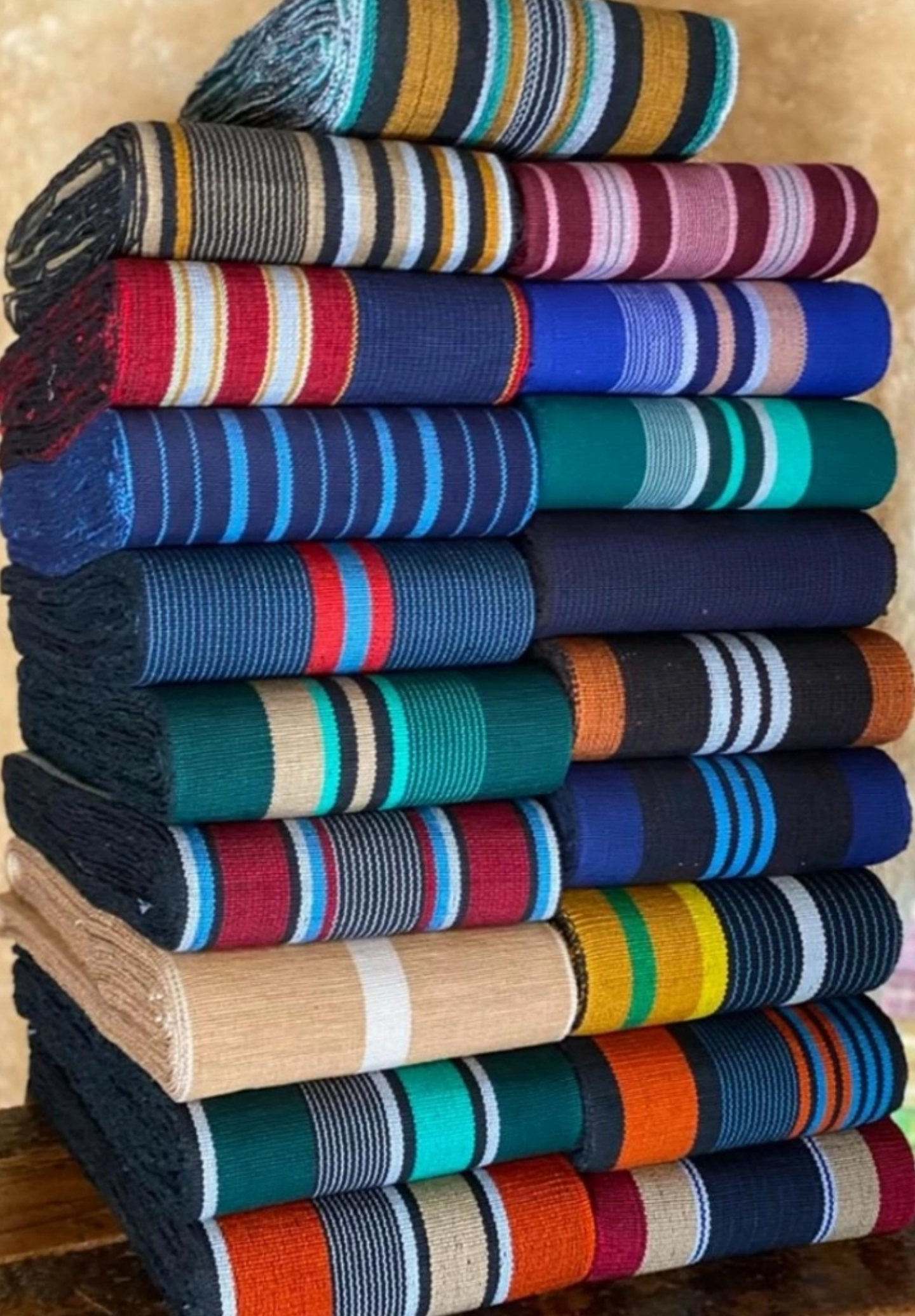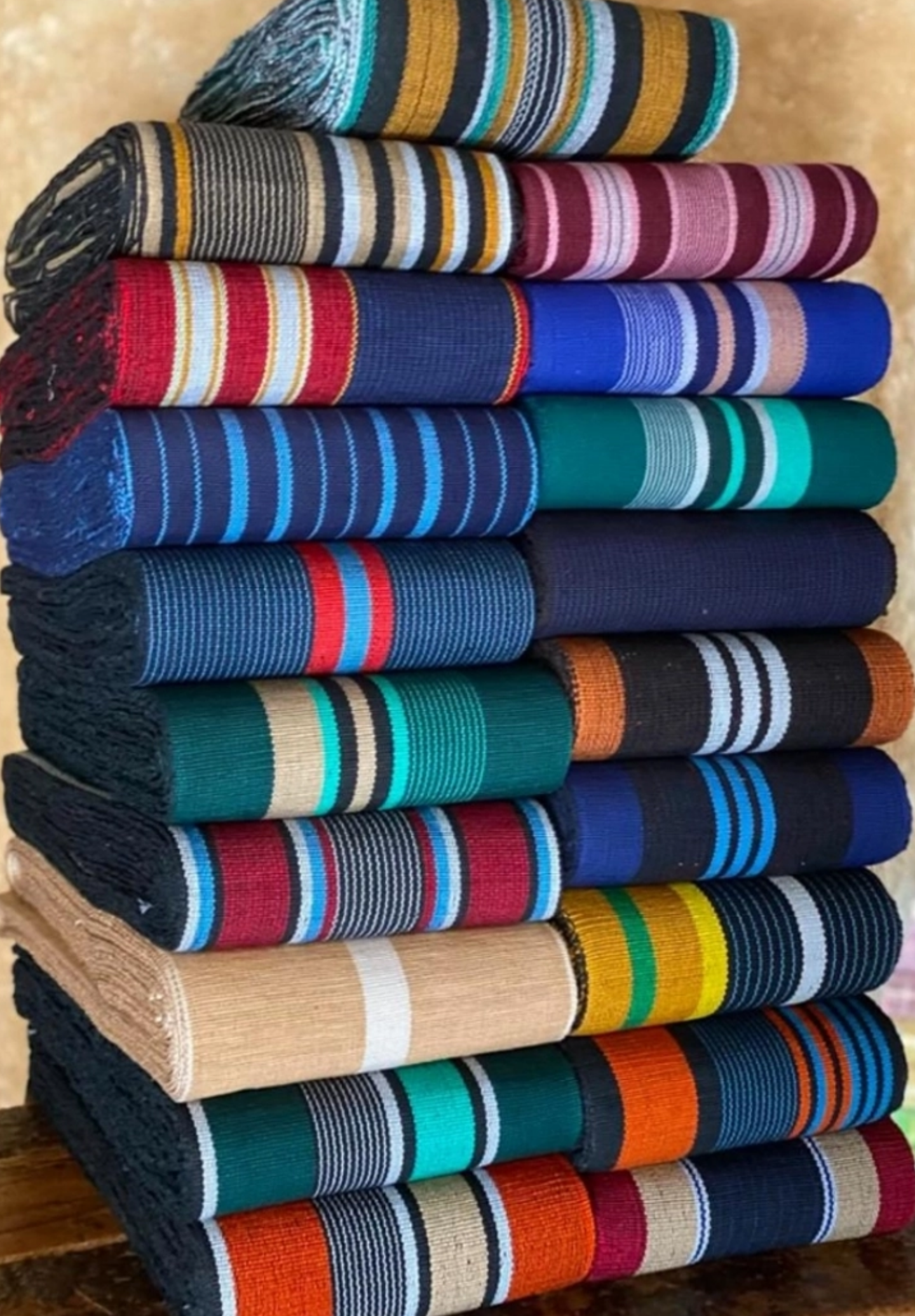Aso Oke: Woven With Soul

Aso Oke (pronounced ah-SHAW okay) isn’t just fabric.
It’s a heartbeat — steady, proud, and deeply rooted.
It’s the kind of cloth that doesn’t just cover you…
It carries you.
Born from the hands of Yoruba weavers in southwestern Nigeria, the name Aṣọ Òkè means “top cloth” — a name that says it all. This fabric doesn’t whisper. It doesn’t ask for permission.
It arrives. And when it does, it brings generations with it.
For decades — no, centuries — Aso Oke has been more than clothing.
It’s been a crown. A shield. A flag of identity.
It’s what you wear when the moment matters — weddings, coronations, naming ceremonies, funerals.
The cloth that tells the room: This isn’t ordinary. This is sacred.
Crafted By Hand. Powered By Heart.
Aso Oke begins on a loom — not in a factory.
Each thread passed by hand. Each pattern guided by memory.
The artisans, often men who learned from their fathers, work with focus, rhythm, and soul — weaving narrow strips of fabric that, once joined, become something powerful.
Cotton. Silk. Sometimes synthetic fibers.
But the real material?
Intention.
You’ll feel it in the richness of the texture — thick, proud, and structured like a story standing tall.
You’ll see it in the shimmer of metallic threads catching the light.
And you’ll know it when you put it on — that sense of standing taller, walking slower, knowing exactly who you are.
Colors With Meaning. Cloth With Memory.
Every Aso Oke has a name. And every name has a spirit:
-
Etù — Deep indigo, calm and grounded.
-
Sányàn — Earthy beige or soft brown, smooth as silk, whispering elegance with every fold.
-
Alààri — Bold wine red, rich and commanding — the color of royalty, the weight of legacy.
These aren’t just colors. They’re moods. Memories. Messages.
Today, Aso Oke speaks in many hues — from blush pinks to emerald greens. Modern expression meets ancient language.
When Aso Oke Shows Up
You don’t wear Aso Oke casually.
You wear it when life calls for presence.
When love is being honored at a traditional wedding — bride and groom glowing in matched fabrics, their families in coordinated aso-ebi, radiating unity.
When a chief is being crowned.
When a newborn is named, or an elder is buried.
When music plays, kola nuts are broken, prayers are said.
Aso Oke doesn’t just attend these moments.
It blesses them.
From the Village Loom to Global Runways
Though it comes from ancient soil, Aso Oke is not stuck in time.
Today’s designers are reimagining it — shaping it into blazers, flowing gowns, handbags, clutches, even home décor.
It’s on red carpets in Lagos and catwalks in Paris.
It’s no longer just traditional — it’s timeless.
The spirit remains untouched.
Wearing Aso Oke Feels Like…
Putting on Aso Oke is like wrapping yourself in your grandparents’ prayers.
It’s like hearing your name spoken with pride — even before you open your mouth.
It’s not just style.
It’s substance.
It’s the past holding hands with the present.
It’s the quiet confidence of knowing exactly where you come from.
Because in every thread, there’s a memory.
In every fold, a blessing.
In every step you take while wearing it — a story walks with you.
In the End…
Aso Oke isn’t made in bulk.
It’s made in spirit.
It isn’t worn to blend in.
It’s worn to honor.
So whether you’re tying your gele, stepping out in a regal agbada, or carrying a bag trimmed in this sacred cloth — know this:
You’re not just wearing something beautiful.
You’re wearing home.

